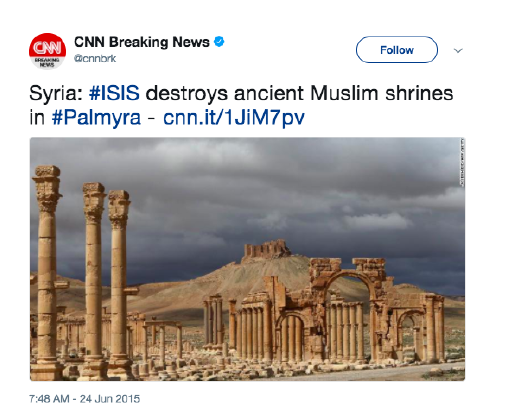Source: Twitter
Last April, contributor Jana Fredricks attended the 2018 Museums and the Web conference in Vancouver. Amidst the exciting chatter of digital collections, online audience engagement, and shiny new tech, she presented research on three technologies that have changed the way cultural heritage sites are understood and documented in the digital age. Her paper, Digital Tools and How We Use Them: The Deconstruction and Reconstruction of Cultural Heritage in Syria, was presented in a panel entitled Post-Colonial Digital.
Her paper posits that increasing use of digital technologies necessitates a reevaluation of professional norms in the cultural heritage sector. Digital technologies provide enticing opportunities to increase accessibility, maximize public standing, decrease costs, and preserve heritage in new, more affordable ways. They also present precarious ethical challenges, defy existing definitions and professional values, and risk further commodification of cultural heritage.
She surveys three digital technologies impacting at-risk cultural heritage sites in Syria: social media and the evolution of networked communications, geospatial data, and technology-mediated reconstruction projects. She then examines how these technologies are impacting the destruction and reconstruction of tangible cultural heritage sites in Syria.


